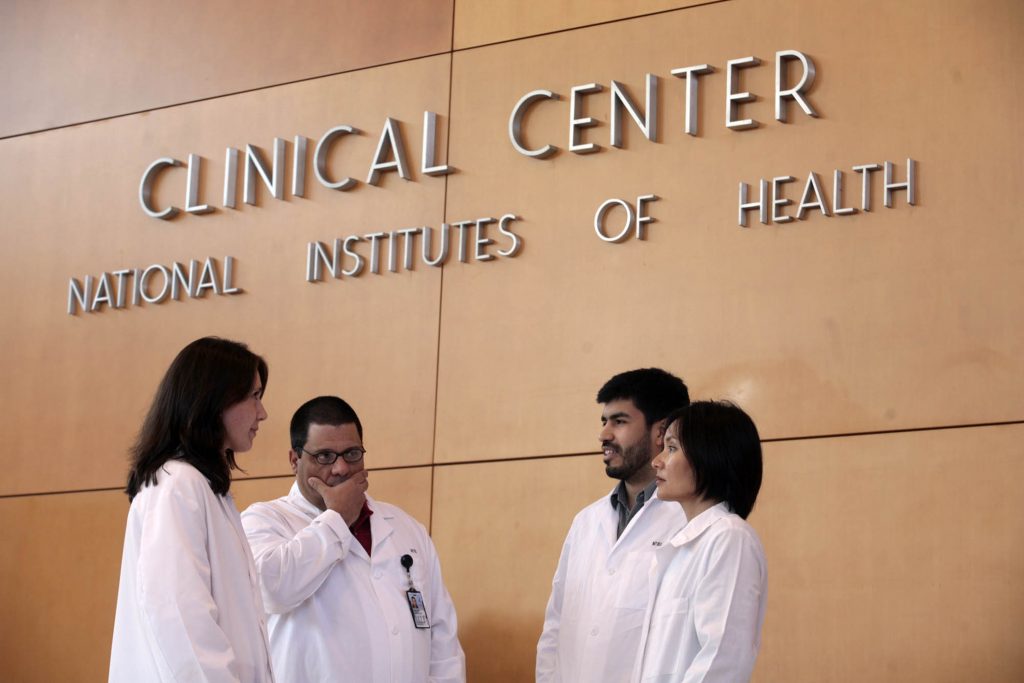
, CEO AND FOUNDER, OPENTHEBOOKS.COM
The National Institutes of Health (NIH) has received more scrutiny of its activities over the past two years than perhaps ever before. Yet its leadership consistently fails or refuses to answer the call for transparency. This time, NIH leadership is fighting to keep secret hundreds of millions of dollars in private royalty payments pocketed by the agency and its bench of scientists. Americans deserve some sunlight on what appears to be a potentially enormous conflict of interest.
The NIH distributes roughly $32 billion in research grants to 56,000 recipients in the medical community each year. Those taxpayer dollars lend quite a bit of clout. But there’s money traveling in the other direction, too, when NIH-backed work is utilized by private companies. We know precious little about it, but over just five sample years, it amounted to a whopping $134 million, spread over 22,000 payments to nearly 1,700 scientists. Each and every one is a potential conflict of interest.
An obscure 1980 statute sponsored by Senators Bob Dole (R-KS) and Birch Bayh (D-IN) updated U.S. patent law, allowing for these government scientists to be credited as “co-inventors” on medical products and qualifying them for royalty payments. The payments last had a public look in 2005, when the Associated Press found some 918 scientists receiving $9 million. That group included current and recent leadership such as Dr. Anthony Fauci, his deputy Clifford Lane and previous NIH Director Francis Collins.
But since then, NIH has become much more secretive, as the payments skyrocketed.
When our organization, OpenTheBooks.com, discovered the royalties were still obscured from public view, we filed a Freedom of Information Act request for a decade’s worth of line-by-line payments, which NIH summarily ignored. We sued and, after a protracted fight, the Beltway health care behemoth admitted it had 3,000 pages of responsive documents. Thus far, NIH has disclosed 1,200 pages, beginning with the earliest transactions in our request (fiscal years 2010 through 2014).
To recap, the NIH used public dollars to dole out grants, received nine figures’ worth of private royalties for the results of the taxpayer-funded research and then used more taxpayer dollars to fight key disclosures in court.
Most disappointing, the paperwork is so redacted as to be of little use.

However, unlike in 2005, we can’t see how much actually went to each scientist and who made the payments; the agency has redacted that information. Potential conflicts could lie therein, as financial stakes could color ongoing research. It looks like the NIH spent taxpayer resources to keep the most important part a state secret.
During congressional hearings last week, Rep. John Moolenaar (R-MI) brought the transparency concern directly to NIH Acting Director Lawrence Tabak. Tabak said the agency was simply following guidelines under the Bayh-Dole statute. Moolenaar kept pushing back on the cozy arrangement where scientists review and opine on the efficacy of certain treatments while they receive money from undisclosed companies. Tabak said there were “firewalls” in place separating the decision-makers from the active researchers receiving the royalties, but Moolenaar was unimpressed. Ultimately, Tabak grudgingly admitted the “appearance of a conflict,” and Moolenaar urged him to make all relevant information public sooner than later.
If future document releases show royalties have stayed on a familiar trajectory, it’s safe to estimate that the NIH and its scientists have collected up to $350 million between 2010 and 2020, across a bipartisan pair of presidential administrations.
It’s unconscionable for NIH leaders to blanket the airwaves making public health proclamations meant to be above politics or reproach, while this secret stream of payments continues unabated. If the NIH won’t reorient itself toward the transparency Americans are owed, then Congress needs to use its full oversight capabilities to ensure money isn’t tainting critical decisions, research or public guidance. Lawmakers should also revisit the Bayh-Dole statute and update disclosure requirements to address this blight on the integrity of our public health sector.
Rather than prolonged legal battles and subpoenas, line-by-line payments should be made public as a matter of course. Americans deserve the full picture when it comes to their health decisions.
The views expressed in this article are the writer’s own.
This article originally appeared on Newsweek



More Stories
Diabetes Awareness is Important
Today’s News: March 26, 2024
The Greatest Purveyor of Violence In The World